The missile antitank Ferret
The immense majority of armoured/scout cars built in WW2 of course saw much action in all weather and rough terrains, with little maintenance, and were pretty much worn out after 1945. By 1947 they were slated to be replaced so the same year a requirement was issued for which Daimler won the contract, largely based on the reputation of the Dingo scout car. The new vehicle, the Ferret, was developed in 1949 with a prototype presented and tested in 1950. After the trials, it was accepted for service in 1952.The Daimler Ferret was basically a modernized Dingo, with hindsight and combat reports, so intended at improving many points while keeping what made the succes of the first vehicle: It shares many similarities such as the H-form drive train helping to lower its silhouette while keeping sufficient ground clearance. The vehicle was overall a bit larger and stronger to support a one-man turret on top, whereas the Dingo was a simple semi-open top two-man comparment with the driver and gunner side by side. Like the former Dingo, the Ferret had its engine compartment at the rear, but a sturdy and more powerful water cooled 4.26 litre Rolls-Royce B.60 petrol engine. This power unit generated 130 bhp at 3,750 rpm. It was coupled with a 5-speed pre-selector gearbox, all gears being available in reverse as well. Top speed was generous, at 58mph or 93 kph.
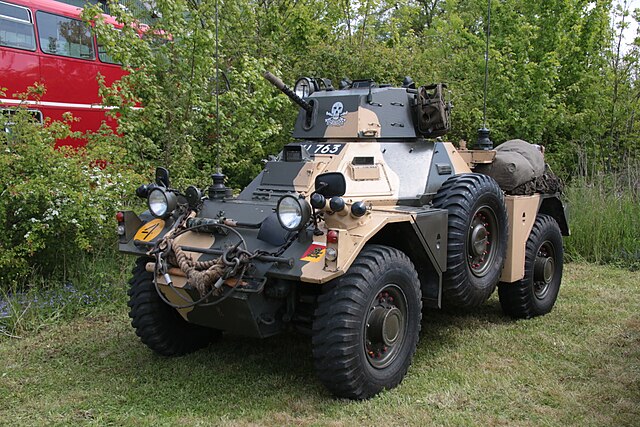
Ferret Mark II at Old Time Rally 2015
Between a better power-to-weight ratio and longer wheelbase the Ferret was clearly superior to the Dingo in terms of speed and mobility on all terrain. Daimler apparently surpassed its WW2 success, and the Ferret initially likle the Dingo lacked a turret. The Mark I just had a driver in the center (unlike the previous vehicle) with excellent peripheral vision, while the vehicle commander was seated behind and above, seeing through the open top hatch, and both communicated through a simple one-way intercom. There was a third crew member seated across and tasked of the radio.
The Mk2 introduced a six-faceted turret, raising the position of the commander and protect him while providing a .30 calibre Browning machine gun (later GMPG). The third crew member (radioman) was eliminated but the vehicle gained in efficience. Then came the Mk 3 Ferret which had much larger 11x20 inch wheels for better mobility on soft ground. However it never went into production. The Mk4 Ferret instead had these large roadwheels with bigger brakes (a critic of the Mark I-II) plus a flotation screen to be amphibious. Then came the Mk5 Ferret, probably the wildest of the bunch, which is why it is seen as a standalone here.
Ferret Swingfire - Design
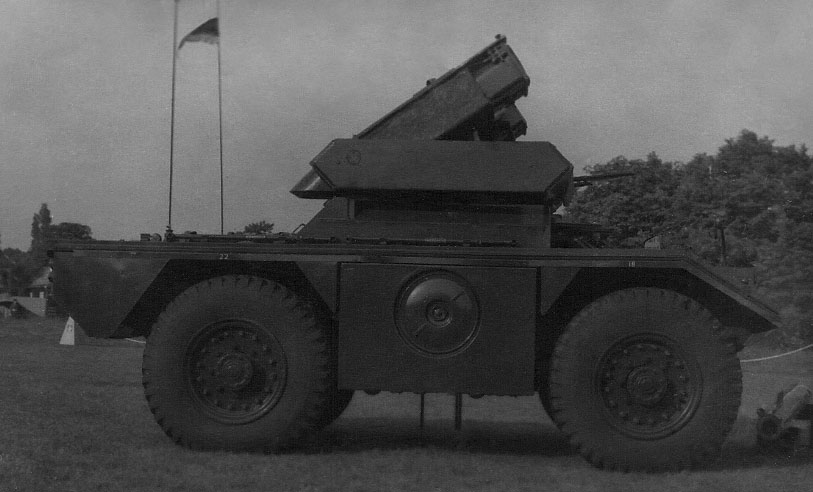
The Mark V was a late production version intended at giving reconnaissance unit extra capabilities in case of encounters with tanks. The basi vehicle was a mix of the best features present already on the Mark 3 and Mark 4 with, but sporting a new turret ring and a brand new, much larger aluminium turret. The goal here was for it to house and fire four Swingfire ATGMs (anti-tank missiles) while keeping the GPMG for close combat. The spare wheel was elminated in this new design, and new twin stowage boxes were fitted with a circular door to facilitate water expulsion when fording a river, thanks to the bilge pump.
Unlike earlier Marks, the V uses the 7.62 GPMG as standard to be used in large numbers in German-based units and with NATO. This large aluminium turret was made in order to keep the weight down, and was a first in the British Army. It offered poor protection however (especially if the thickness - unknown - was the same as steel). The missiles were placed on a traversing cradle, with hydraulic drive for elevation, and they were angled at a high degree if needed. The particularity of the design was that these missiles could be remotelly launched, by dismounting the vehicle, the crew venturing on a dominant ambush position for better view, and launches missiles through the portable control unit. So the launch was not in line of sight to the launcher.
The Ferret had therefore a presumably 6-16mm Steel protection for the hull, exact same as previous Marks, but and estimated 6-16mm Aluminium alloy on the turret. For active protection an optional NBC package, and six smoke dischargers at the front of the vehicle, in two banks of three per side. Inside the vehicle were at least three 7.62 mm (0.3 in) ammo boxes, and two spare Swingfires were carried inside the hull in separate boxes, one per side. This was less than the missiles carried by the launcher, so this was more an afterthought and the Mark V was not intended to provide prolongated fight but just shoot and scoop with anti-tank missiles on advancing Soviet T-54/55/62s.
Development: The quest for a Swingfire launcher vehicle

Centerpiece of the design, these missiles were initially considered for the Chieftain, in the same way Swedish Chieftains used their Nord AS-11 missiles. The external mounting was problematic, notably as the missiles were exposed to enemy fire, and reload exposed the men in charge as well. It also required required changes to the expensive sighting systems. However in the end, the development of the Royal Ordnance L11 main gun eventually nullified the extra hitting power of the Swingfire. Attention turned to smaller vehicles.
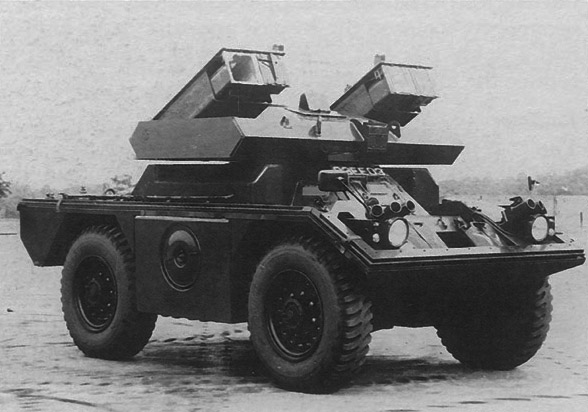
Archive, Ferret Mark V as completed, 1970.
Next, by November 1962, the specification 1174 was issued for a light vehicle to carry Swingfire missiles, for which the FV432 "universal" chassis was chosen. The original design showed a roof-mounted rack, two launcher tubes, both angled to 30° to find behind barriers or entrenchments. Aiming used a remote sight or from inside, a periscopic extension to clear any obstruction. There was a hinge for the launchers to be lowered and reloaded from inside, solving the crew protection issue. That was the Mk438 Swingfire after modifications notably after the forward-exhaust concept was abandoned, when accepted into service. They were notably deployed with the BAOR in Germany. The same happened on the FV 102 Striker later (in service until 2005 !), using a different type of launcher, with five missile and five reloads.
Then came the choice of an even lighter vehicle, to bring this anti-tank capability to reconnaissance (cav) batallions. The FV 701(C), Ferret armoured car, was chosen as the most prolific light vehicle in these units. After a specific lightweight turret was designed, the solutions chosen were really specific. It appeared that the forward-firing rocket blast sometimes damaged the flamable aluminium and more often control wires on the Fv 438, and a new launcher with open ports at the end of each tube was adopted. On launch, the exhaust was vented out of the vehicle deck, as they were launched in a semi-broadside, not to risk the light vehicle (compared to the FV 432) to topple over with the force of the exhausts. The four tubes were separately mounted but could not be lowered for reload unlike on the FV 432. It needed to be made externally.
About the Swingfire ATGM
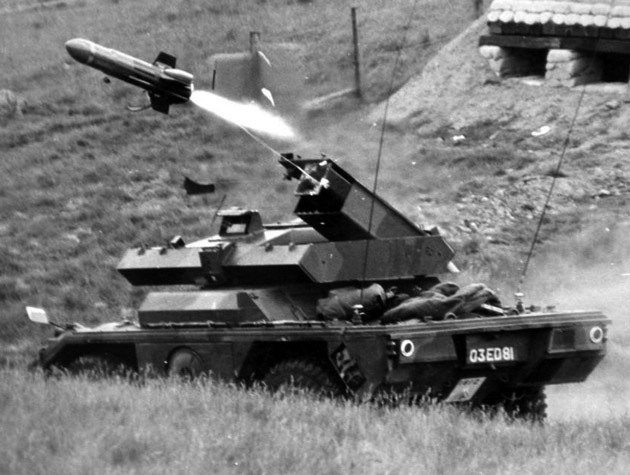
FV 712 firing at the test range
The missile istelf was a wire-guided anti-tank missile developed in the 1960s. It reached production from 1966 to 1993, an amazing duration for such an old design, proving the efficience of the concept. Its name reffered at its rapid 90 degrees turn after being fired, taking a line of the sight trajectory as it was wired. This was an enormous advantage as the launcher vehicle could be concealed while the operator, could be even remotelly firing it using a portable sight.
The Swingfire entered operational service in 1969 but was constantly upgradef to stay relevant over the years. It was used on the FV438 as FV102 as seen above, but also based on several truck mountings, notably the Land Rover (and Ferret !). There were also tests on helicopters and hovercrafts, not adopted. The Swingfire remained in service on the FV102 Striker until 2005 until replaced by new generation MANPADS, whereas the Ferret Mark V was retired much sooner.
The Ferret ATGM had a Diameter of 170 mm, wingspan of 0.39 m for 1.07 m long, weighting 27 kg with a 7kg HEAT warheard. It was short range 150 m to 4000 m. Missile Velocity was 185 m/s and it was Wire-guided (MCLOS) and later SACLOS, hence the SWIG acronym ('Swingfire With Improved Guidance'). It was thrust Vectored Control (TVC) with a penetration power of 800 mm RHA. Unit cost was £7,500.
Daimler Ferret Mark V specifications | |
| Dimensions | 3.7 x 1.91 x 1.88m () |
| Total weight, battle ready | 3.7t |
| Crew | 2, see notes |
| Propulsion | Rolls-Royce B60 6L 130bhp @ 3750rpm |
| Maximum speed | 93 km/h (58 mph) |
| Suspension | Leaf spring |
| Range | Like regular Ferret |
| Armament | 1x 7.62 GPMG, 4x Swingfire ATGMs |
| Armor | 6-16 mm steel, turret aliminium alloy |
| Total production | c800 |
Combat Deployment
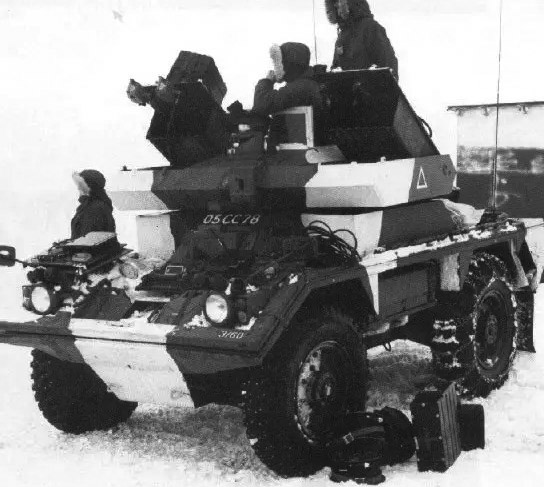
Ferret Swingfire of the BAOR in winter camouflage for NATO manoeuvers, early 1980s
The Mark V of FV 712 was deployed in cavalry reconnaissance units of the British Royal Army but apparently never exported. Due to its nature, it was especially present in the BAOR (British Army of the Rhine) until the late 1980s. It was also deployed, like other Marks of Ferrets, with Parachute bataillons. It was deployed from heavy lift carriers by the Parachute Squadron Royal Armoured Corps, Parachute Squadron RAC, deployable via parachute from aircraft on specialised platforms.
Its main advantage compared to the FV 702 and FV 732 APC-based tracked vehicles was a speed of nearly 90 kph. It enable quick deployment, and the tactic favoured was to deploy these on the flanks of the main Soviet advance, taking concealed position in small groups to fire at once and retreat (since the reloading process was long, insecure and complicated anyway). The service entry is probably circa 1970 when the missile was available (no info yet) and retirement before 1990. In all 4400 Ferret were built from 1952 and 1962 before replacement by the Fox.
Illustrations
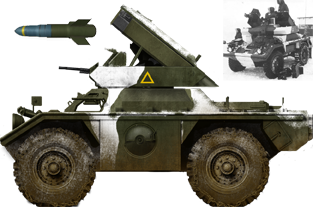
Ferret V in Germany, washable winter camouflage, NATO winter manoeuvers. Note the side panel had been removed.
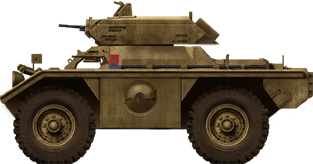
FV 712 in desert pattern, now in Bovington. 20th trials unit, id 03ee06
Gallery
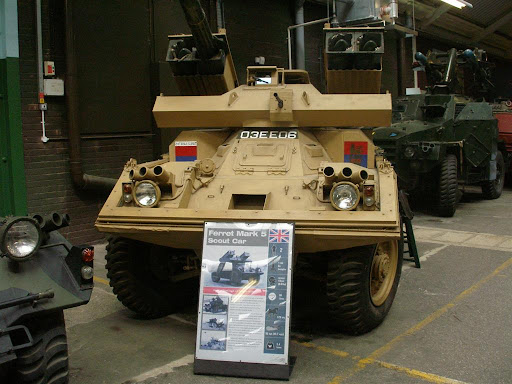
Ferret V at Bovington, ancient display (src google, site not accessible)
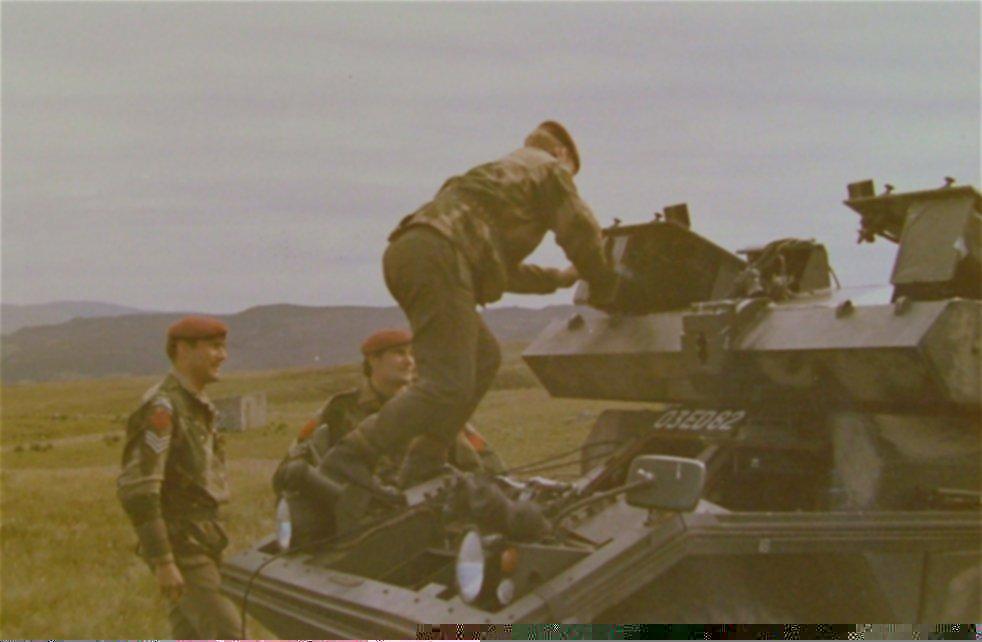
Loading a missile. The photo shows apparrently a washed over muddy camouflage for NATO manoeuvers. id E3E082. David Mallam, src paradata.org.uk.
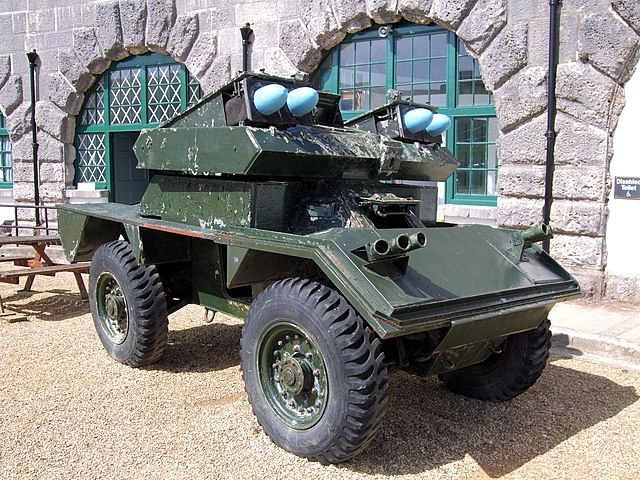
Mobile missile launcher Nothe Fort
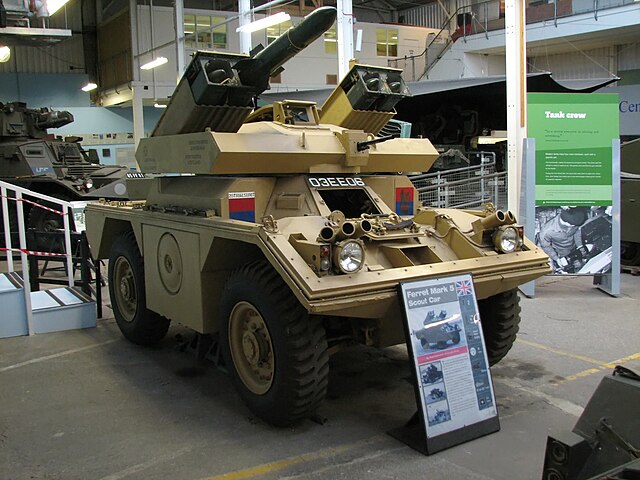
Mark 5 at Bovington in sand color
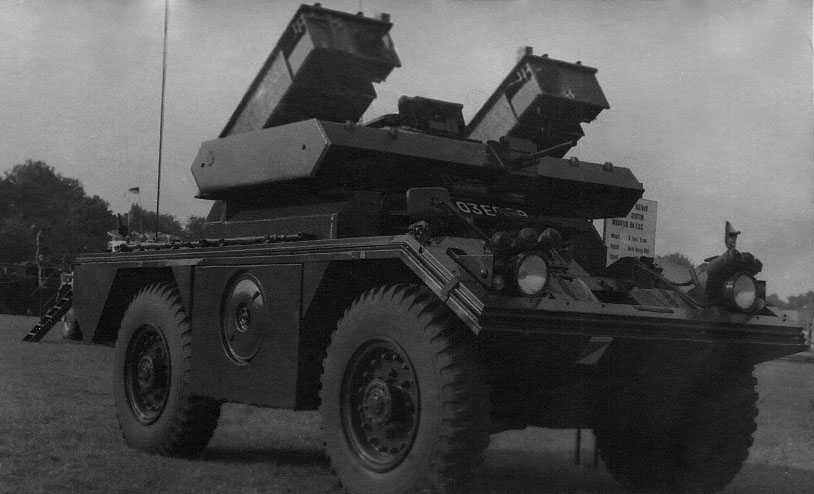

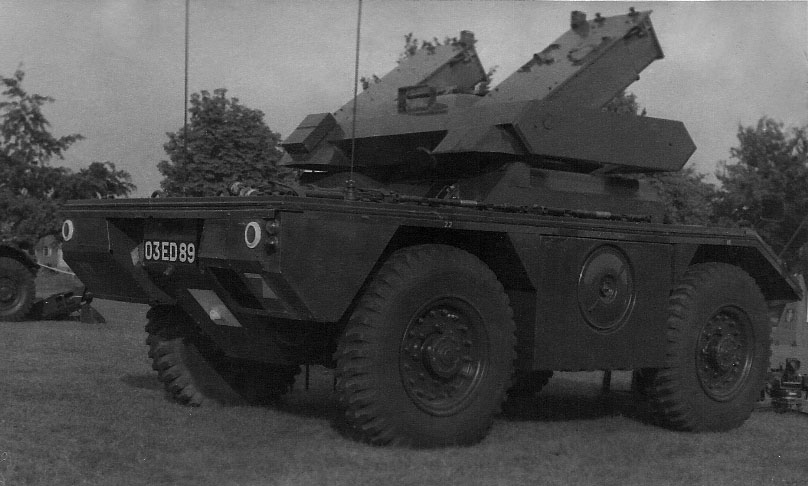
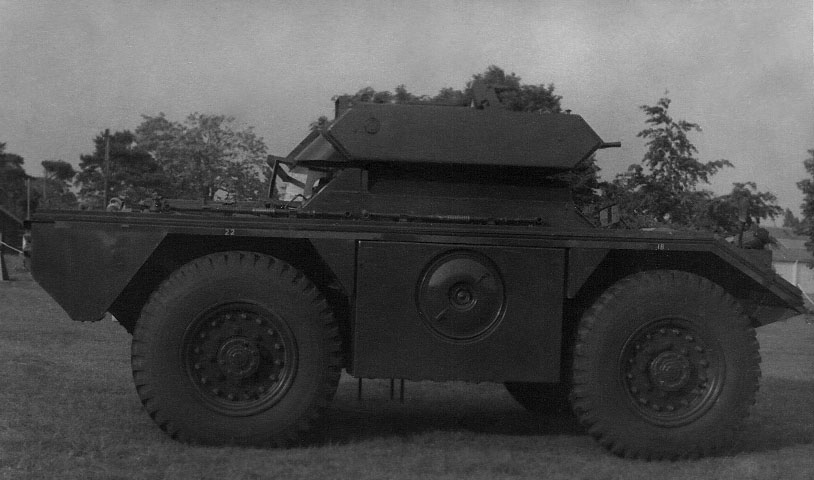
Mark V photos by Keith Brooker
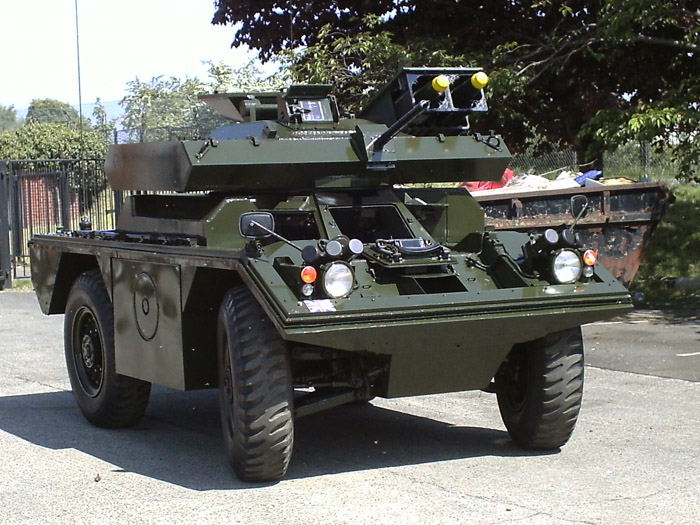
Working condition 1970s Ferret Mark V in an exhibit


The Ferret Fv 703 Mark 2/6 Vigilant and FV 712 in the background, Bovington - Pinterest

Same in closer view, also pinterest
Src
Ogorkiewicz, R. M. Ferrets and Fox, AFV Weapons Profile No.53. Profile Publications, Windsor 1972.Foss, Christopher F. Armoured Fighting Vehicles of the World. Charles Scribner's Sons, New York 1974.
Foss, Christopher F. Jane's World Armoured Fighting Vehicles. St. Martin's Press, London 1977.
Ferret Scout Cars By Kevin Browne & Frantisek Koran
Ferret Scout Car (out of print) by Peter Gudgin
The Ferret Scout Car in Canadian Service by Colin MacGregor Stevens
Ferret Scout Car FV700 Series by Pat Ware
Daimler Ferret Scout car By David R Haugh
warwheels.net
forum.warthunder.com
ferret-fv701.co.uk
armedconflicts.com
On recomonkey.com
Swingfire - wikimedia

Cold War Tanks


































Cold war tanks posters

Cold War Main Battle Tanks

Cold War Soviet Army

